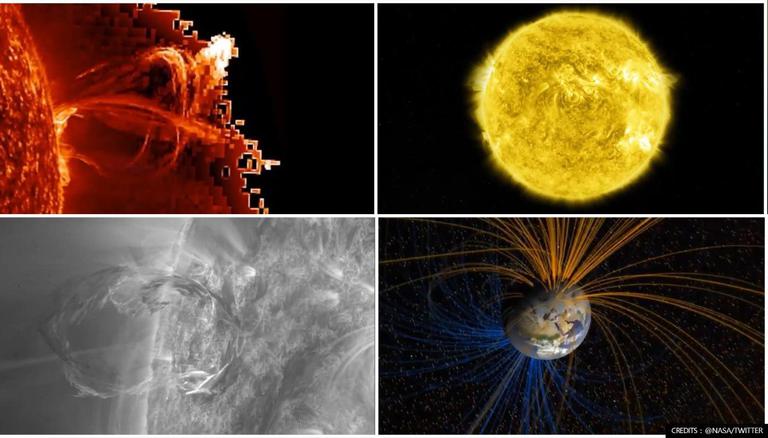
Our seemingly calm Sun can have a nasty temper that comes in the form of powerful explosions. The star's unpredictable outbursts can disrupt satellites in orbit and be dangerous for astronauts. Though the flares are well-documented, researchers have never been able to pinpoint the cause of the erratic behavior. Now, the Sun's incredible multi-staged "tantrum" may help scientists get closer to solving the long-standing mystery.
Solar eruptions come in three forms: Coronal Mass Ejections (CME), jets, and partial eruptions. CMEs and jets are both explosive and spew out a large amounts of energy and solar material into space. Partial eruptions start strong but fail to garner enough power for the particles to leave the Sun's surface. Since the events have usually been observed separately, experts were not sure if they were related.

But the solar eruption observed in March 2016 had elements of all three explosions! It began with the Sun spewing out scorching solar material that was too large for a jet but too narrow to be classified as a CME. The violent eruptions were followed by a less intense partial explosion in the same location.
NASA researchers, who revealed their findings at the American Astronomical Society meeting on June 7, 2021, say the never-before-seen eruption indicates that all three explosions are triggered by the same mechanism. They speculate that the mechanism also helps reduce the intensity of the explosions in the Sun's corona, resulting in the partial eruption. NASA has dubbed the phenomenon the "Rosetta Stone" solar explosion, after the Egyptian artifact featuring the same script in three languages: hieroglyphics, ancient Egyptian demotic, and ancient Greek.

"This event is a missing link, where we can see all of these aspects of different types of eruptions in one neat little package," Emily Mason, a solar scientist at NASA's Goddard Space Flight Center, said in a statement. "It drives home the point that these eruptions are caused by the same mechanism, just at different scales."
However, Mason and her team are still unsure what causes the eruptions or why some are more explosive than others. Getting to the bottom of that mystery will enable scientists to predict these events hours in advance, providing astronauts, space agencies, and corporations time to take precautionary measures.
Resources: NASA.gov, Business Insider.com
